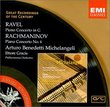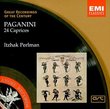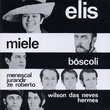| All Artists: Witold Lutoslawski, Tadaaki Otaka, BBC National Orchestra of Wales, Valdine Anderson Title: Witold Lutoslawski: Symphony No. 3; Chantefleurs et Chantefables Members Wishing: 0 Total Copies: 0 Label: Bis Release Date: 2/20/1996 Album Type: Import Genres: Pop, Classical Styles: Vocal Pop, Opera & Classical Vocal, Historical Periods, Modern, 20th, & 21st Century, Symphonies Number of Discs: 1 SwapaCD Credits: 1 UPCs: 789368312429, 7318590007433 |
Search - Witold Lutoslawski, Tadaaki Otaka, BBC National Orchestra of Wales :: Witold Lutoslawski: Symphony No. 3; Chantefleurs et Chantefables
 | Witold Lutoslawski, Tadaaki Otaka, BBC National Orchestra of Wales Witold Lutoslawski: Symphony No. 3; Chantefleurs et Chantefables Genres: Pop, Classical
|
Larger Image |
CD DetailsSimilar CDs
|
CD ReviewsNot a bad Third Symphony, but matched with a poor late work Christopher Culver | 10/26/2007 (3 out of 5 stars) "This BIS disc features two orchestral works by Polish composer Witold Lutoslawski performed by the BBC National Orchestra of Wales conducted by Tadaaki Otaka. The second is a world premiere recording, where Valdine Anderson is solo soprano.
"Symphony No. 3" (1983) was commissioned in the early 1970s by the Chicago Symphony Orchestra, but appeared only a decade later after several false starts. It lies in between two clearly defined eras of the Lutoslawski's work, containing both the aleatorism of the 1960s and 1970s and hints of the return to accessibility of his late neoclassical phase. Nonetheless, each of these two tendencies is blunted so that they exist in great harmony, forming a piece that is quite different from his other works though unmistakably Lutoslawski. The score is precisely notated--there are no "wavy lines" here, but the element of chance is provided by a large series of "ad libitum" sections which are unconducted. I've always had a hard time hearing an overall form for this piece, which starts from a series of hammering E notes and then wanders off. The composer claims that it's got four sections, but I have a hard time hearing it. However, that does not mean that the Third is boring. The frustration of not being able to speak of the structure of the symphony makes it harder for me to communicate to readers here just how great it is. It might be a somewhat formless blob, but it is beautiful, and in the end when this formlessness suddenly takes on a very directed form towards a more certain finale and ends on the same hammering E's., it's stunning. Otaka leads a performance which is as good as any other out there, and this is the only recording I know where the piece is divided over several tracks so that one can better examine its construction. For me, thesubsequent change in Lutoslawski's music through the 1980s is one of the most depressing developments in contemporary music. He reduced heavily the role of aleatorism, heavily crippled his harmonies, and began producing generic neo-romantic pieces. One such work is "Cantefleurs et Chantefables" (1990), a song cycle on poems by Robert Desnos. One only has to compare this to his earlier Desnos setting "Les espaces du sommeil" of 1975 to see how far downhill Lutoslawski had gone. His writing becomes outright melodic, the material consists of simple repetitions, and little element of virtuosity is apparent. The Third Symphony can be a fine introduction to Lutoslawski, but since the other work on this disc is so dull, and the disc is only 54 minutes long, I'd recommend hearing the Third on a Sony disc where Esa-Pekka Salonen conducts the LA Philharmonic." |

 Track Listings (19) - Disc #1
Track Listings (19) - Disc #1



